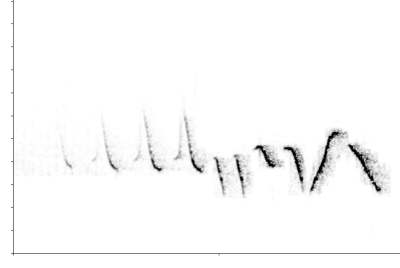
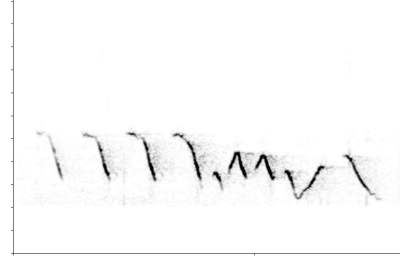
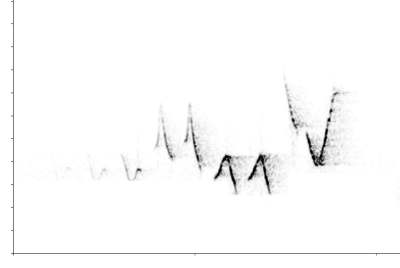
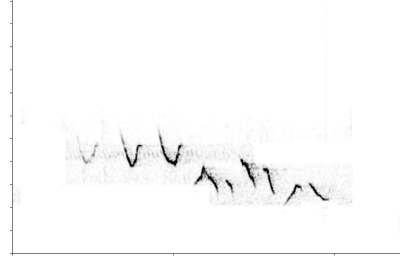
Click on spectrograms to download sound files
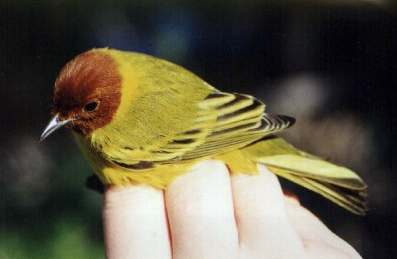
Note: You can read more about the Mangrove Warbler's song and singing behaviour in the Journal of Field Ornithology: Mennill, D. J. 2001. Song characteristics and singing behaviour of the Mangrove Warbler (Dendroica petechia bryanti). Journal of Field Ornithology. 72: 327-337.
![]()
Song Description:
The Mangrove Warbler's song is superficially similar to the short whistled song of the migratory Yellow Warbler, often ending with an upslurred syllable. The chip note call is strong and emphatic (Stiles & Skutch 1989).
![]()
Song Measures:
The Mangrove's song is typically 1.5 to 2.0 seconds long and given at a maximum rate of one every twenty seconds during intense song bouts. Each song contains an average of 8.3 ± 1.7 syllables in total, with an average of 5.3 ± 1.3 different types of syllables per song. Songs begin with three or four (rarely five) repeats of the same syllable which grows louder as it is repeated. The terminal syllable may be a gently downslurred note (e.g. songtypes one, two and four above) or an emphasized upslurred note (e.g. songtype three above).
In a sample of 135 songs from seven males (>12 songs from each male) I found a total of 20 different songtypes composed of various arrangements of 40 different syllable types (N = 1115 syllables from 135 songs). While many of these syllables share certain fine structural characteristics in common with migratory Yellow Warbler syllables, all syllables were distributed across a much lower frequency range than the migratory subspecies (ie. 2200 to 6000 Hz for the Mangrove Warbler). I found an average repertoire size of 5.6 ± 3.2 songtypes per individual (maximum of 12 songtypes). However both this measure and the measured total number of songtypes in the Celestun population are obviously constrained by a small sample size; average repertoire size and total number of songtypes are probably much higher than indicated here.
![]()
Singing Behaviour:
Males sing from regularly-visited songposts in the mid-to-high branches of the mangroves throughout the morning, orienting their bills upwards as they sing. Both males and females defend territories, sometimes as a pair, even in the non-breeding season. Both sexes give vigorous chip notes in encounters at territory borders, and males give frequent songs in such disputes. When a neighbour's song is played back from the centre of a territory, a territorial male will approach the playback speaker immediately and make numerous passes over it. After playback, males generally do not begin singing until several minutes after their initial approach. As such, both songs and calls appear to function in territory defence.
![]()
Habitat:
Mangrove Warblers are resident in the coastal mangrove and were found in small adjoining territories (<50 meters in diameter) in small red mangrove swamp fragments in Celestun. The subspecies D. p. bryanti is found all along the coast of the Yucatan Peninsula and south to the coast of Belize.
![]()
Return
to Bird Songs of the Yucatan Main Page
All
information copyright Daniel J. Mennill, 1999. Do not use without permission.